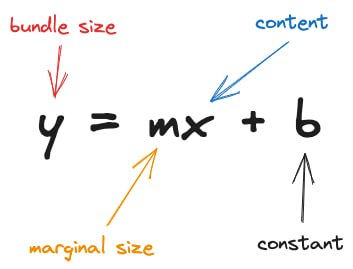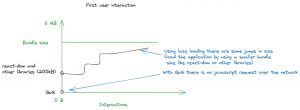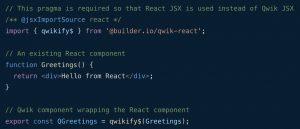
A Need for Speed:
Maximizing Performance Using React and Qwik
React is widely acclaimed for its performance, a feature that is no accident but rather the result of a focused design aimed at simplicity, scalability, and speed.
React’s performance capabilities have significantly advanced by introducing features like React.memo, useMemo, useCallback, Suspense, and Lazy Loading. React.memo aids functional components by only re-rendering when their props change. This optimization is bolstered by hooks like useMemo and useCallback, which help to prevent redundant recalculations and renders, improving efficiency. Additionally, Suspense and Lazy Loading help manage loading states and permit components to load lazily, improving load times.
React’s library continues to evolve, with recent releases including features like the useTransition feature to allow us to prioritize/deprioritize certain renderings to ensure an optimum UX. However, as developers, we also have a role to play in optimizing the performance of the React code we create. This starts with using a profiler to identify where our performance bottlenecks are occurring and tackle the issue(s) behind each problematic component. A well-tuned application is a more usable one!
However, as applications grow in size and complexity, the load on the system increases as more code and data need to be downloaded, processed, and displays rendered. In some edge cases, the outer boundary of React’s performance is being reached.
So what happens when fast isn’t fast enough?
This is where the Qwik framework comes in. As the name implies, Qwik is engineered to speed up the rendering of single-page applications. It is crafted specifically to work on top of React, creating a marriage of speed!
Qwik has been engineered to provide the absolute fastest rendering possible and promises groundbreaking features that might revolutionize web experiences! This article will explore how Qwik compares to existing frameworks and how it can enhance React applications. It will be left to the reader to decide how groundbreaking they feel the Qwik framework is.
Detailing the Problem: Modern Frameworks and Performance
Despite their robustness, frameworks such as React, Angular, and NextJS often need help with performance challenges. Tools like Lighthouse highlight issues like significant time delays due to downloading and parsing of the entire JavaScript bundle during the initial page load.
Moreover, as the complexity of an application increases, the size and number of components scale linearly, leading to an O(n) time complexity for rendering, causing potential slowdowns that impact user experience.
The Promise of Qwik: A Solution for Performance and Scalability
Enter Qwik, the framework with a promise of O(1) complexity, suggesting constant performance regardless of the codebase size. Qwik distinguishes itself with its unique rendering paradigm known as “reusability.” Instead of the conventional cycle of destroying and recreating components during lifecycle changes, Qwik’s components persist and are resumed when necessary.
Under the Hood of Qwik: A Deep Dive
Qwik organizes applications into “lands” or user-visible states, ensuring only necessary components are rendered. Furthermore, Qwik uses a built-in function called “Signal” to facilitate communication between components in different lands, simplifying state management. Qwik also enhances performance by implementing deferred JavaScript and lazy loading, minimizing unnecessary network requests and memory usage. Qwik’s server-side rendering (SSR) approach allows browsers to load the initial application state quickly, improving perceived load times and SEO performance.
React and Qwik
The contrast between plain React and React integrated with Qwik is enlightening. While React is powerful, the added benefits of Qwik, including constant performance, reusability, and efficient state management, offer enhanced performance and scalability.
Transitioning to Qwik might present some challenges. Developers could face a steep learning curve and compatibility issues with existing technologies. However, knowing these challenges upfront enables developers to prepare effectively. Resources like documentation, community forums, and tutorials can aid the transition.
Coding Example: Transitioning a React component to Qwik
The provided JavaScript code demonstrates the fusion of React with Qwik. The code starts with a directive that uses React’s JSX syntax.
Next, the qwikify$ function is key to adapting React components for a Qwik application.
A simple React component named ‘Greetings’ is created, which returns a greeting message. To make this component compatible with a Qwik application, it is wrapped using the qwikify$ function. The result is a new component, ‘QGreetings,’ which can be used across the application.
This process illustrates how React components can be seamlessly integrated into a Qwik application, highlighting the interoperability of both frameworks.
Figure 1: Qwik code integration with React
Enhancing React Applications with Qwik: A Conclusion
The alliance of Qwik and React is a game-changer in web development. When enhanced with Qwik’s unique features, React’s component-based approach offers unmatched performance and scalability.
Transitioning to Qwik may present challenges like a steep learning curve and potential compatibility issues. However, these obstacles are worth overcoming given the numerous benefits, including improved performance, efficient state management, and constant performance regardless of the codebase size.
In conclusion, integrating Qwik into the tech stack is a significant decision with substantial rewards. As the web development landscape evolves, the Qwik-React combination is set to play a pivotal role, revolutionizing web experiences and showcasing the limitless potential of modern web development.

Tim Starets
President at RIA Solutions Group




